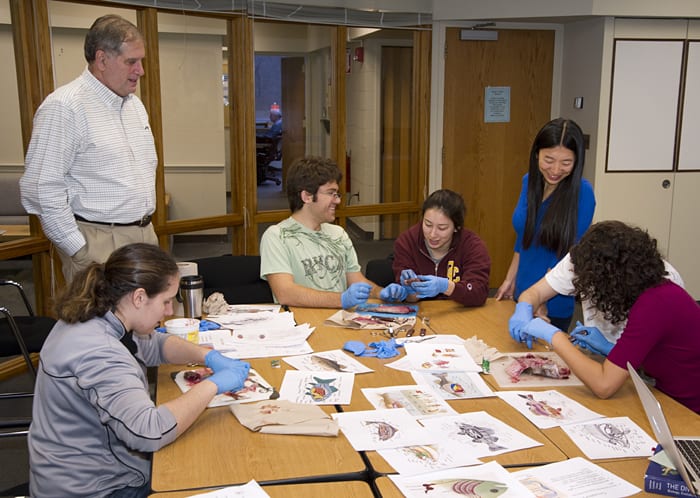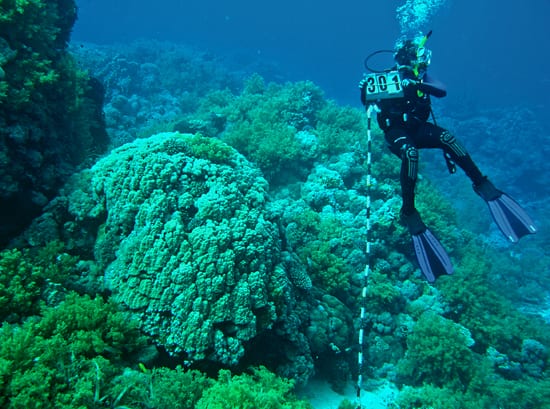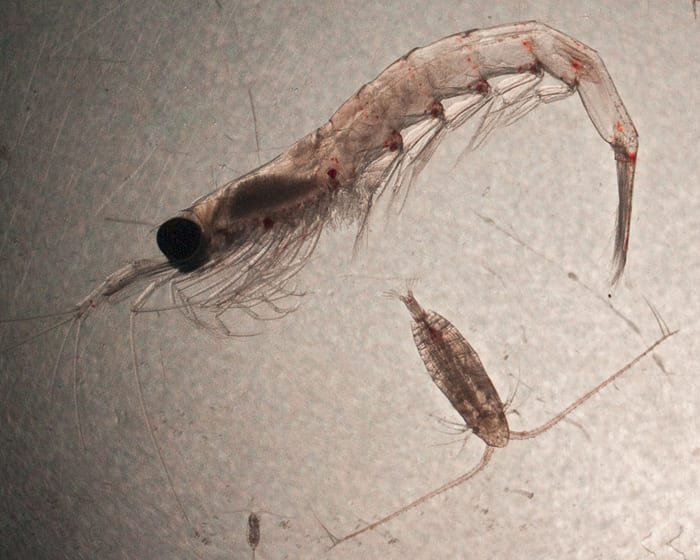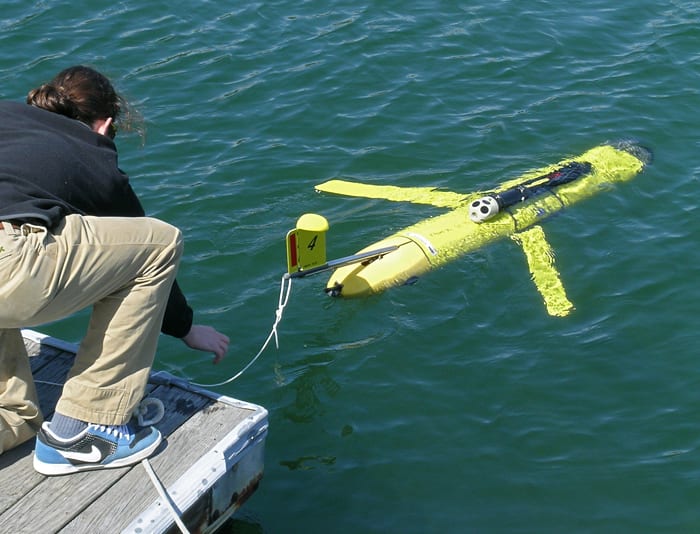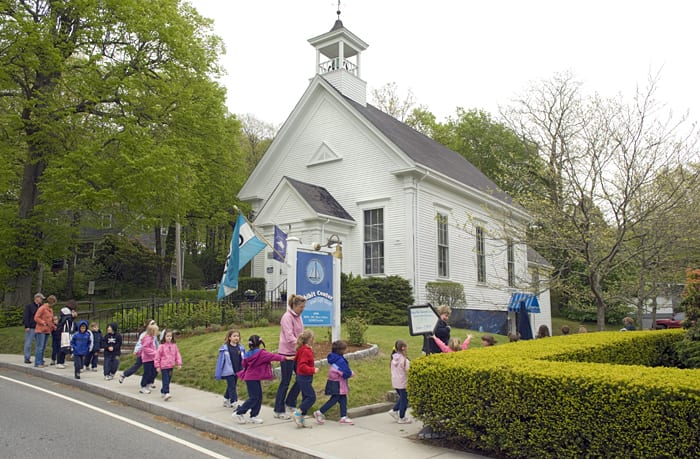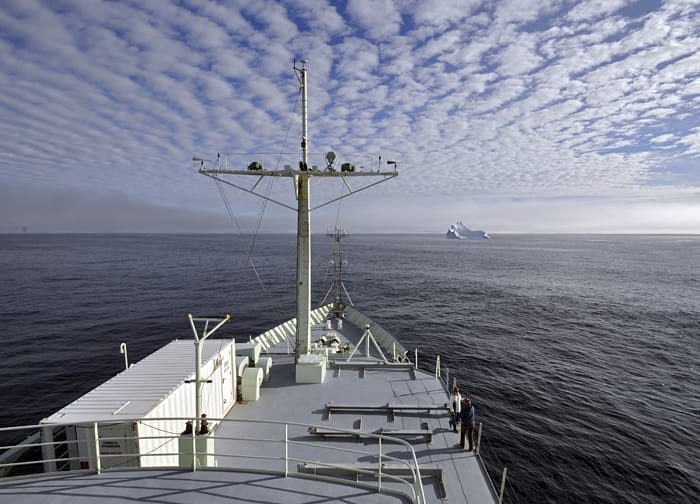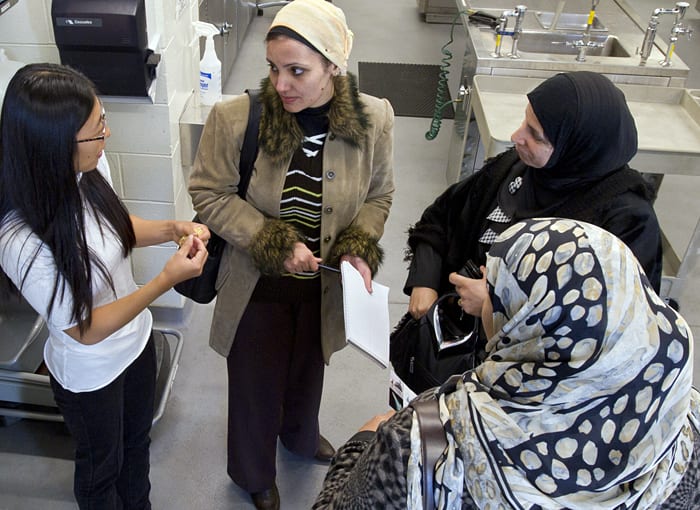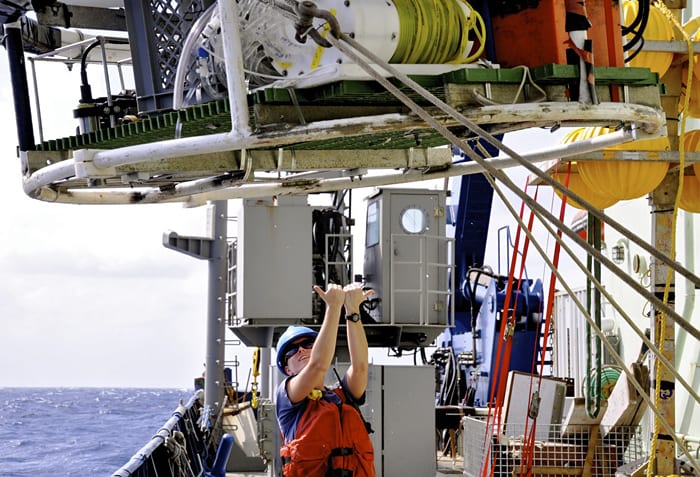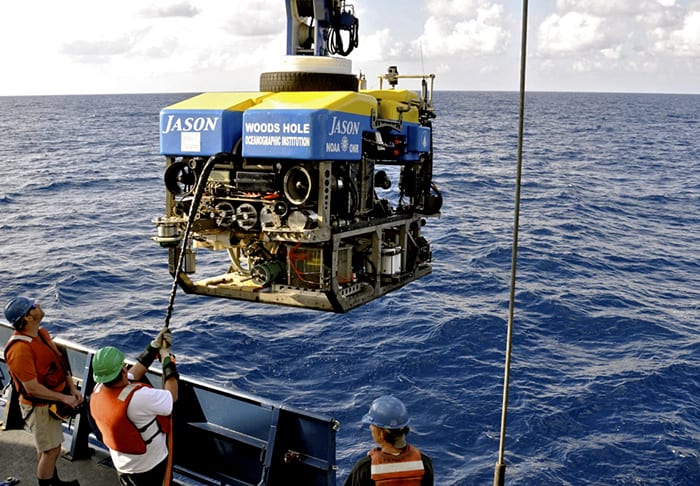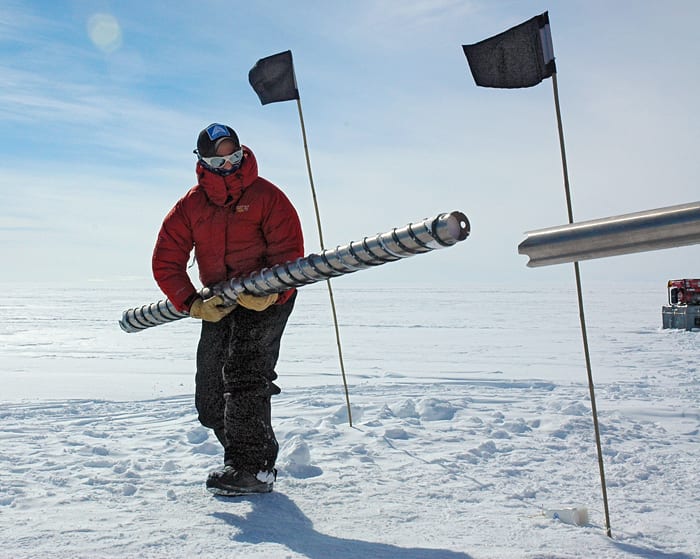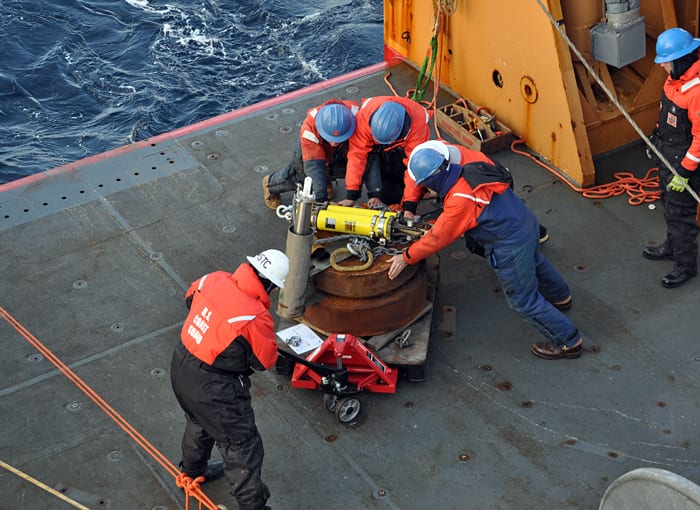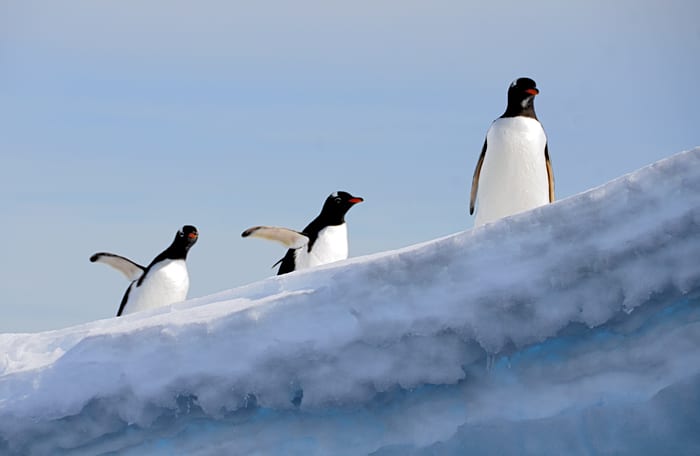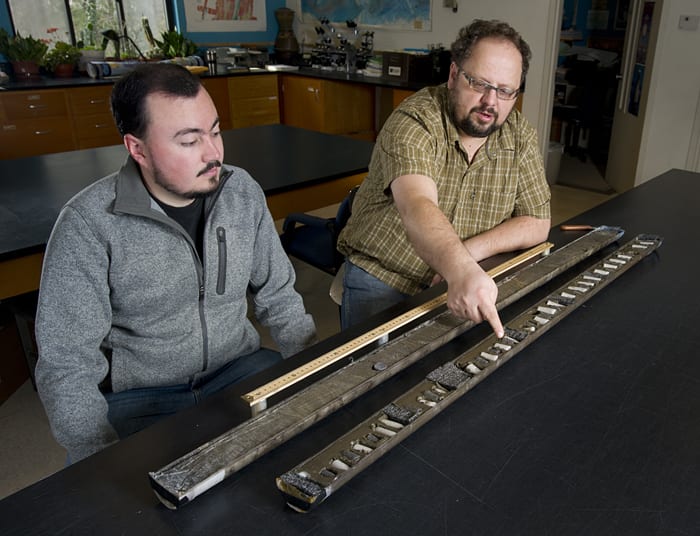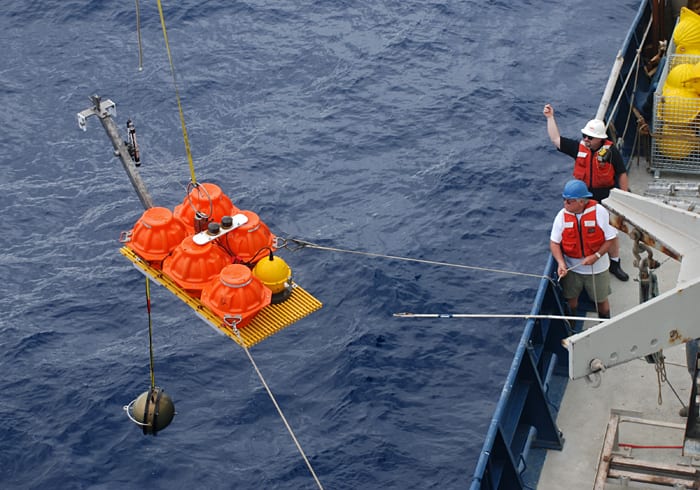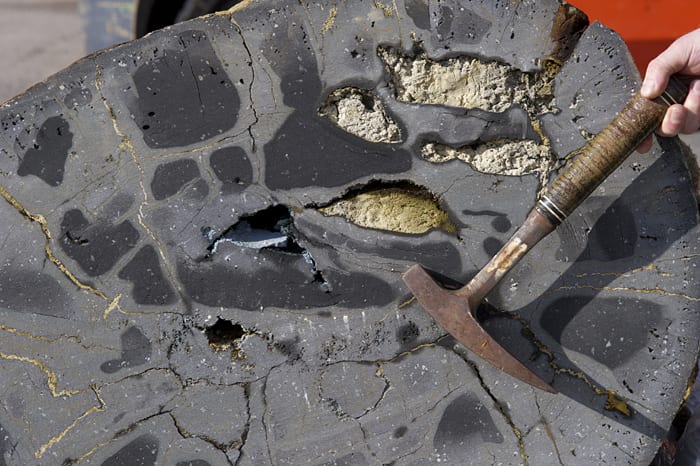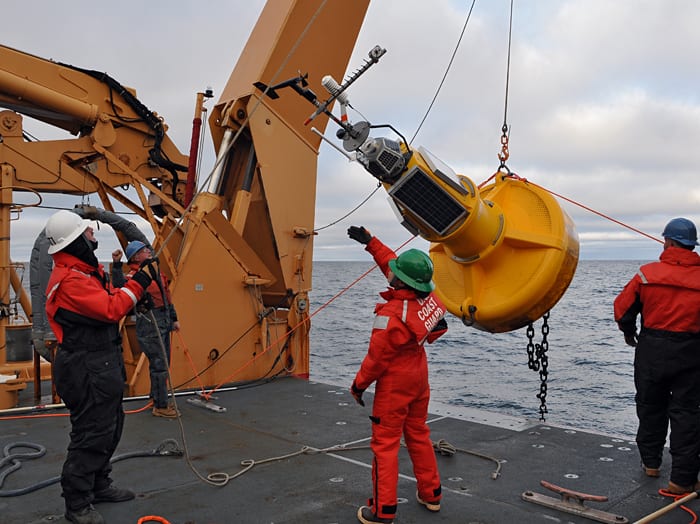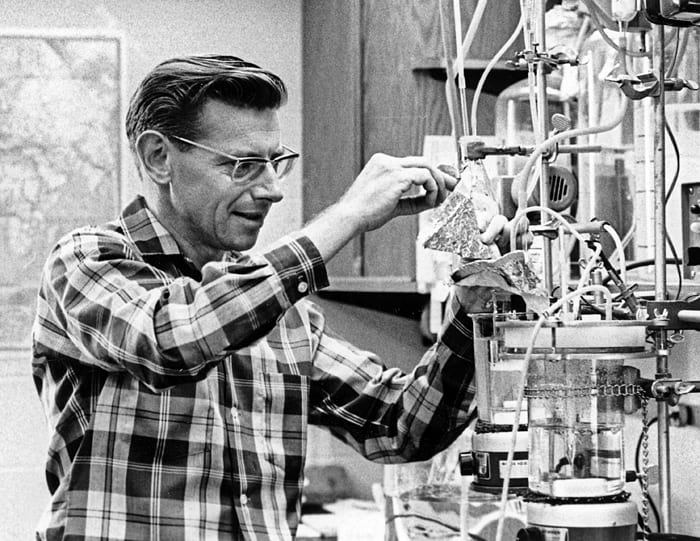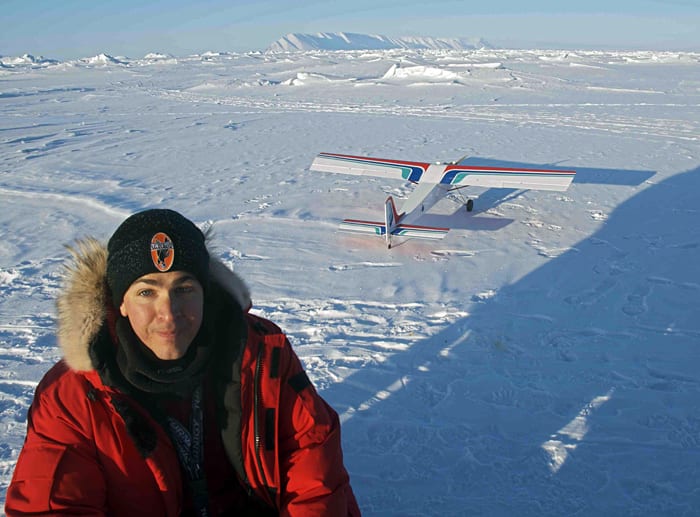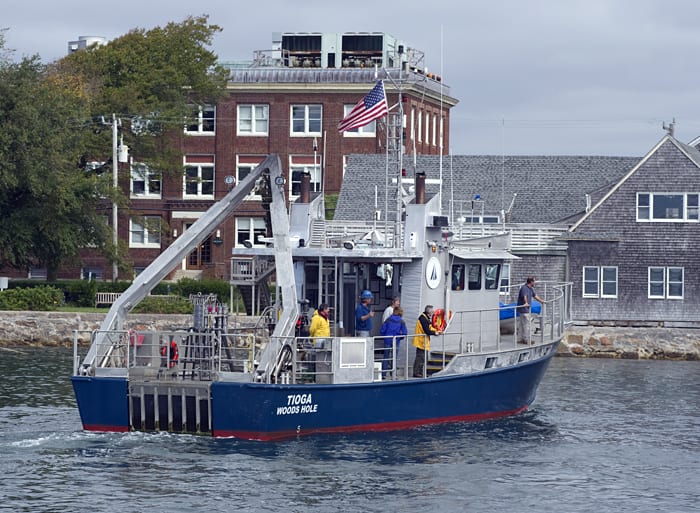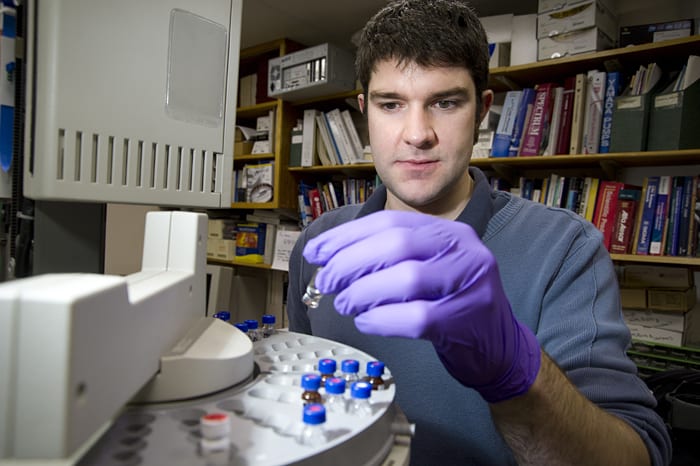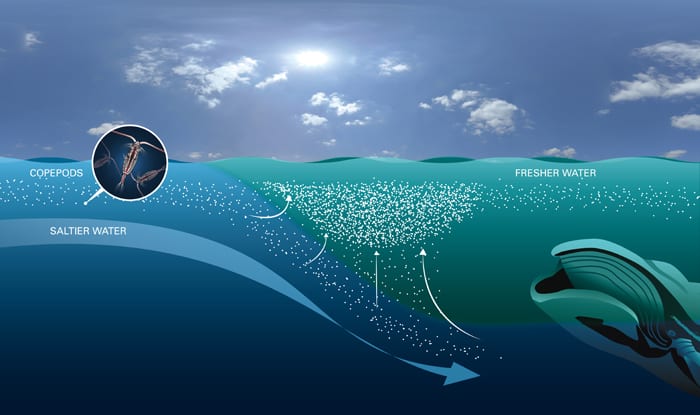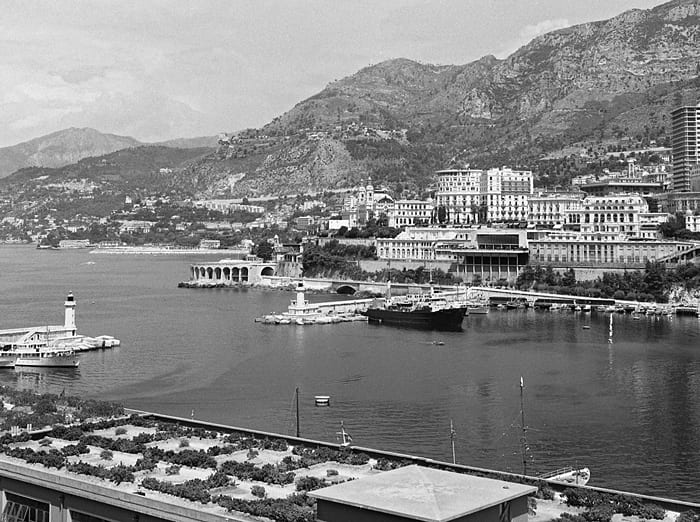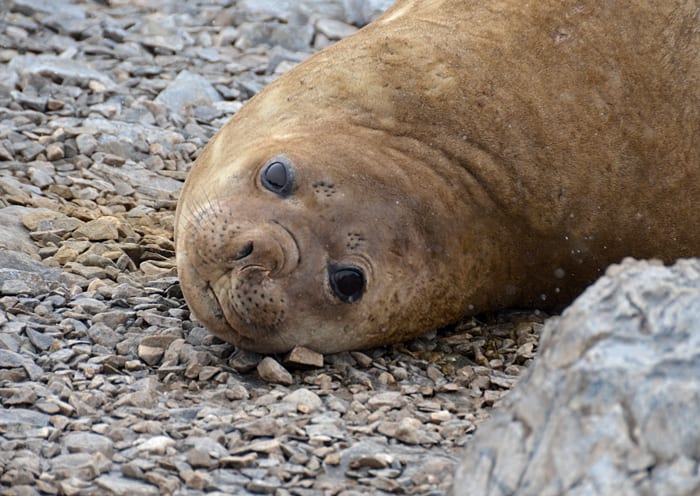Multimedia
Winter Break at WHOI
A group of undergraduate students came to WHOI to sample oceanography during their 2012 winter break, through the Institutions Ocean Research Experience (ORE) program. The students, from liberal arts colleges,…
Read MoreWHOI Diving in Photos
Plankton Portraits
Marine mammals, fish, and seabirds all depend on abundant tiny planktonic animals for food, especially krill and copepods, little drifting crustaceans that in turn eat much tinier single-celled organisms. WHOI…
Read MoreGliding Through the Ocean Blue
Nick Woods releases an autonomous underwater glider, a tool the MIT/WHOI Joint Program student has used to explore how rich feeding areas for marine animals are created in the ocean.…
Read MoreOpen for the Season
The Woods Hole Oceanographic Institution’s Ocean Science Exhibit Center opens today for another season. Come and learn about the world of ocean science through videos and hands-on exhibits, and climb…
Read MoreA Journey North
In August 2011, research vessel Knorr left Iceland for the Denmark Strait to deploy a dozen moorings that will be collected one year later. Instruments on the moorings help WHOI…
Read MoreWide World of Science
Maya Yamato (left), a student in the MIT/WHOI Joint Program, talks with guests in the Computerized Scanning and Imaging Facility on the Quissett campus. The guests were among a group…
Read MoreGetting the Goods
The manipulator arm of the remotely operated vehicle Jason inserts an injection pushcore into the soft sediment at the edge of a deep, anoxic brine basin in the Mediterranean Sea.…
Read MoreBoom Out
During a January expedition in the Caribbean Sea, WHOI shipboard technician Catie Graver used hand signals to guide the winch operator as he lowered a CTD rosette (for measuring conductivity, temperature,…
Read MoreDeep-ocean Workhorse
When WHOI geochemist Chris German assembled a sea-going science team in January that could put in long hours and not balk at work in cold, dark places, he called on…
Read MoreDrill, Baby, Drill
Alison Criscitiello removes the inner barrel of drill containing an ice core from the West Antarctic Ice Sheet. Snow accumulates on the ice sheet in layers, so drilling deeper reveals…
Read MoreSimply Sophisticated
The crew aboard the USCGC Healy pushes a just-recovered mooring anchor away from the fantail during a 2011 cruise in the Chukchi-Beaufort Sea. While most mooring components are fairly sophisticated,…
Read MoreGot Krill?
Gentoo penguins and WHOI biologist Peter Wiebe share a common interest in Antarctica: krill. The tiny, shrimp-like crustaceans are food for the penguins and were the object of a month-long…
Read MoreClimate and Culture
MIT/WHOI Joint Program student Camilo Ponton and WHOI geologist Liviu Giosan examine a sediment core they used to reconstruct the history of India’s monsoon over the past 10,000 years. Collected…
Read MoreMotion Beneath the Ocean
Scientists aboard the R/V Atlantis recover an ocean-bottom seismograph (OBS) off the Galapagos Islands. Seismographs measure movement in the Earth’s crust, and scientists use data from these instruments to calculate the…
Read MoreExtra-firm Pillow
This cross-section of a pillow lava shows pockets of whitish carbonate trapped within, suggesting that seafloor sediments might have been folded into the lava as it erupted. The sample is…
Read MoreBack on Deck
Elizabeth Adams (center), a U.S. Coast Guard Marine Science Technician, assists WHOI engineer John Kemp (blue hard hat) and others in making a mooring recovery during an October 2011 Chukchi-Beaufort Sea cruise aboard…
Read MorePioneer Investigator of Deep-Sea Bacteria
Microbiologist Holger Jannasch (1927-1998), shown in his lab about 1966, is remembered for making seminal discoveries in microbial ecology and launching the new field of deep-sea microbiology. He began studying…
Read MoreThe Wild White Yonder
It was about 25°C (-13°F) this week in Qaanaaq, Greenland (Latitude 77°N), when WHOI post-doc Peter Kimball tested a prototype unmanned aerial system (UAS) developed by him and WHOI colleagues…
Read MoreTour Tioga
On Thursday, March 29 from 9:00 to 4:00, scientists and community members are invited to the WHOI dock to tour the coastal oceanographic research vessel R/V Tioga. Over the past…
Read MoreGlobal River Sediments
WHOI researcher Valier Galy loads a sample into a gas chromatograph to identify and measure the abundance of lipids extracted from river and marine sediments collected from the Ganges-Brahmaputra basin.…
Read MoreRising and Converging
Spring means it’s suppertime in the Great South Channel, an undersea canyon between Nantucket Shoals and Georges Bank. During this time, a relatively fresh coastal current (right) flows south along…
Read MoreAtlantis II in Monaco
In 1963, WHOI’s research ship Atlantis II stopped over in Monaco on its way to the Suez Canal and a research cruise in the Indian Ocean. The second of three…
Read MoreDon’t Make Me Get Up
A lounging elephant seal casts a wary, but sleepy, eye on a group of researchers on Torgersen Island, Antarctica. The scientific team, which included WHOI scientist emeritus Peter Wiebe and…
Read More
